2022.01.10
PEDRO JOSÉ-MARCELLINO
XO/CJ, MDRS CREW #238
The life of a Mars First Responder
Mars Desert Research Station, Utah (USA) — Typically, Crew #238’s breakfasts are relaxed affairs. We start our day sitting under the golden streaks of light popping in through the round windows, and with space-themed music from my own playlist — today it was Aimee Mann’s "It’s Not", and Beach House’s "Space Song".
This morning, there were twelve (or more) of us at the table: our six crew members, four test tubes with spirulina, and two test tubes that commander Robinson and I are treating like collective entities (pronouns: they/them). We are all extremely mindful of the task given to us by Aga Pokrywka, our artist in residence and scientist-extraordinaire: take care of your own tube of spirulina, and in 72 hours we’ll see how it’s doing and if we can consume them. Plenty of protein in spirulina, she tells us.
Except, if we are to care for this spirulina as bacterial pets, can I actually eat it? I think not. (Although, if Alice-the-desert-mouse were to return, I might be distracted by her cuteness.)
Some of us are carrying our tamagochis, er, spirulinas, around our necks, the perfect combo of subtle movement, warmth, and light. Others have placed them on the Hab windows, sunbathing for a few hours, and they seem to be happy there, and doing well. Engineer Werner found a kindergarten for his tube – a surrogate if you will.
This morning, however, breakfast was not all sun, music, and spirulina. Yesterday was the halfway point in our mission, an important landmark. It was Sunday, we had a friendly visitor, and it was all great. But it’s also true that some of the anxieties of returning home, on planet Earth, are starting to seep through.
Now, perhaps that’s also related to the realization that, with only 4 more days of our rotation to go, Eng. Werner and HSO Turner had only done one emergency drill of the half a dozen they promised us. The fact that for a few days we’ve been sitting with both for emergency protocol briefings has hinted that something was incoming.
From fighting fires to EVA rescues (like yesterday’s) to a possible tunnel puncture/breach, to solar radiation, it is essential that protocols are tested in analog situations, to simulate and automate response mechanisms, to systematize and optimize protocols, and to identify human, logistical, communication, and equipment failures.
Our debriefing sessions have been precious, and we are lucky to have a veteran firefighter and an experienced paramedic among our crew. These are skills that have come in handy, and that will be crucial training for the first astronauts going there. In Cuba, every life you’ve saved as an emergency worker tops up your pension; at MDRS 238, we pay them in dehydrated mango crumble. It’s a good deal for everybody!
Anyway: back to breakfast. With a week gone and no emergency procedures to speak of, the rest of us were starting to get suspicious. So much so that, after a successful EVA rescue during The Guardian journalist’s visit, we were positive the day was not over for Werner, Turner… and certainly not for the rest of us.
On that first rescue, for the matter, artist-in-residence Pokrywka felt “ill” and passed out dramatically while walking back from the stunning labyrinth we’ve drawn in the red dirt just north of the Hab – the first labyrinth on Mars, we believe.
Upon commander Robinson’s radio prompt, a rescue party was quickly sent out and retrieved Pokrywka safe and sound. And by quickly, I do mean as quickly as you can feasibly get suited-up, open an airlock, wait five minutes, and get out into the Mars terrain. We were back to the Hab in no time, although a surprise EVA suit malfunction meant that I nearly didn’t make it “alive” (fret not: I survived. Just.). We debriefed and brainstormed solutions to the issues we spotted, particularly the possible need for more sizeable airlocks on Mars habs, and certainly the size of a rescue party. With only four of us allowed out, the exertion of three people carrying a human while wearing EVA suits is simply too much. Lesson learned.
Late at night, the commander spotted HSO Turner and Eng. Werner suddenly closed in one of the staterooms and whispering. We suspected another incoming emergency and fretted the dreaded nighttime drill we’d heard about, and the horrid fire alarm we had been briefed on.
We now have Werner down as a very credible Mars Trilogy’s Arkady Bogdanov (in Red Mars, Arkady throws these drills at the first 100 all the time, annoying 99 of them). But the reality is, whether no drill was planned at all, or whether it was aborted following our protests, it never happened. Until this morning, that is.
We had just finished breakfast. I was on my daily Braided session, part of our latency communication study, and had just typed about these annoying emergency drills, which could come anytime when the HSO announced on the walkie: "Outpost, come in. Outpost, come in. This is Hab. Please be advised the following is a Crew 238 scheduled emergency drill. I repeat: be advised that the following is Crew 238 scheduled emergency drill. Please acknowledge" [pause] "Hab, Hab!!!" [breaks] "Hab, this is HSO Turner!" [breaks, cough] "Hab, Come in!" [pause, then silence].
Kay Sandor had just gone into the restroom. Turner was in distress, or so it seemed. Werner was MIA. Upstairs, sockless Pokrywka, the commander, and I (still in my pajamas) looked at each other, rolled our eyes, and it’s possible – not confirming, nor denying – that a couple of curse words might have been uttered by one or two of us.
But we all rushed to our posts, gathering between the two airlocks. The commander kept communicating with Turner and asking Werner to come in (there was no answer). Pokrywka and I were quickly donning our exterior suits and firefighting equipment and were ordered in the tunnels – she was sockless and I, with a fire extinguisher in hand, was limping after pulling a muscle while reaching up for my suit. Turns out those hooks in the EVA room are not apt for 5’7 analog astronauts. We put the fire out with ease, though… or so I thought.
But Werner, hiding in a corner, was ready to tell us we had panicked and put out the smoke, not the fire itself. “Look for the fire”, he said. We found the artificial lamp inside the RAM, whence HSO Turner called it in: “Outpost, be advised Crew 238’s fire drill is now complete. Over.” Less than ideal, but no casualties, luckily. We’ll refresh and repeat. But gladly my pulled muscle bought the entire crew a 24-hour respite from Arkady Bogdanov over here.


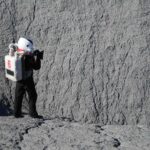
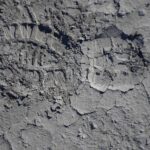
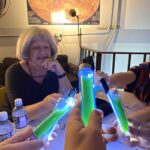
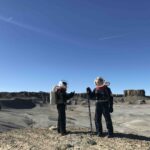

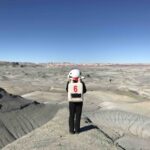
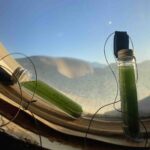
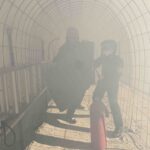
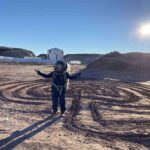
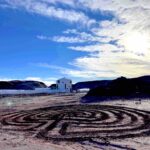
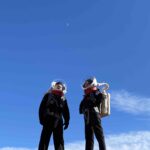
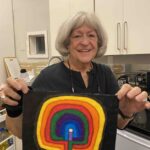
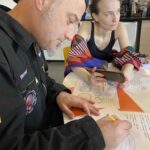

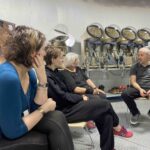
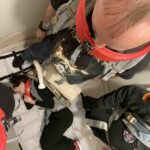
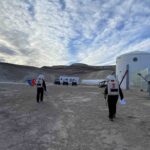

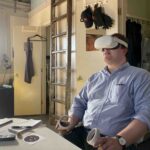
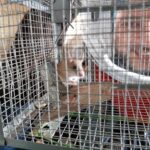
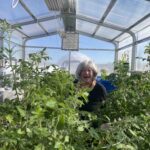
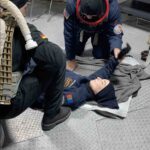
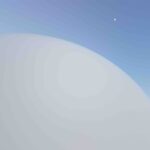
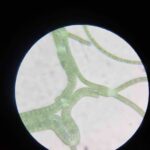
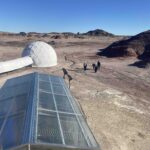

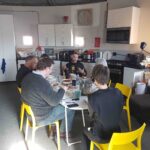
You must be logged in to post a comment.